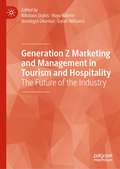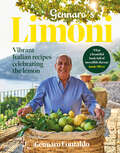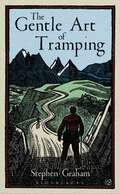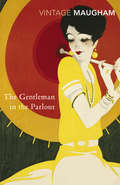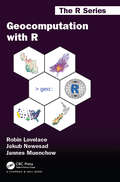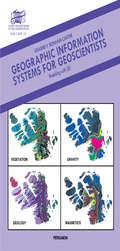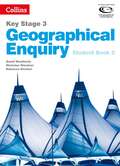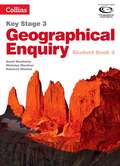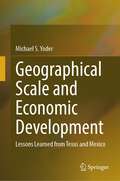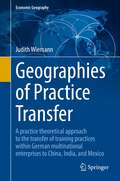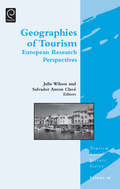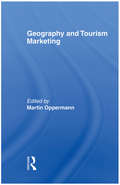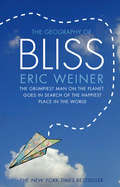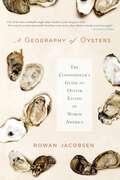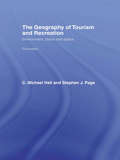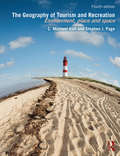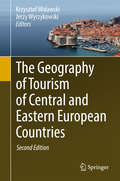- Table View
- List View
General Dynamics F-111F- Jet Combat Aircraft (UEB contracted)
by RnibThis is an image of a jet combat aircraft seen from above. There is a locator dot shown, which will be at the top left of the page when the image is the correct way up. The image is in the centre and a scale in metres on the left of the page. The aircraft nose is in the top centre and the tail in the bottom centre of the page. The fuselage goes up and down the middle of the page. The cockpit cover is shown as four windows near the nose. The wings go sharply down to the left and right in a swept position. The dotted lines to left and right show the position of the wings when in unswept position. The wings each have three ailerons on the rear edge of the wing. At the bottom of the page in the centre of the fuselage is the vertical tail. To each side of this is the tailplane. The jet output nozzles are to the left and right of the vertical tail. The plane is grey although it was commonly painted with camouflage colours. The textures on the tactile image reflect structure not colour. There is a different texture for the cockpit, wings, engine and fuselage. The F-111F is a variable geometry aircraft whose wings extend at low speed and fold in at high speed to reduce drag.
General Dynamics F-111F- Jet Combat Aircraft (UEB uncontracted)
by RnibThis is an image of a jet combat aircraft seen from above. There is a locator dot shown, which will be at the top left of the page when the image is the correct way up. The image is in the centre and a scale in metres on the left of the page. The aircraft nose is in the top centre and the tail in the bottom centre of the page. The fuselage goes up and down the middle of the page. The cockpit cover is shown as four windows near the nose. The wings go sharply down to the left and right in a swept position. The dotted lines to left and right show the position of the wings when in unswept position. The wings each have three ailerons on the rear edge of the wing. At the bottom of the page in the centre of the fuselage is the vertical tail. To each side of this is the tailplane. The jet output nozzles are to the left and right of the vertical tail. The plane is grey although it was commonly painted with camouflage colours. The textures on the tactile image reflect structure not colour. There is a different texture for the cockpit, wings, engine and fuselage. The F-111F is a variable geometry aircraft whose wings extend at low speed and fold in at high speed to reduce drag.
Generation Z Marketing and Management in Tourism and Hospitality: The Future of the Industry
by Nikolaos Stylos Roya Rahimi Bendegul Okumus Sarah WilliamsGeneration Z (Gen Z) is the demographic cohort also known as Post-Millennials, the iGeneration or the Homeland Generation. Referring to individuals born roughly between the mid-1990s and the early 2000s, they are our youngest consumers, students, colleagues, and voters. Understanding them is a key aspect. In the context of the hospitality and tourism, Gen Z-ers represent the future in human resources, and service production and consumption. This book focuses on the aspirations, expectations, preferences and behaviours related to individuals within this demographic. It critically discusses their dynamism in driving the tourism sector and offers insights into the roles that Gen Z will inhabit as visitors, guests, consumers, employees, and entrepreneurs. This book is a valuable resource for managers, scholars and students interested in acquiring concrete knowledge on how Gen Z will shape the marketing and management of tourism-related services.
Gennaro's Limoni: Vibrant Italian Recipes Celebrating The Lemon
by Gennaro ContaldoAsk a foodie about the Amalfi Coast and lemons immediately spring to mind. The sweet, aromatic, large and thick-skinned Sfusato Amalfitano is the extraordinary and delectable citrus fruit which Gennaro Contaldo grew up with.
Gennaro's Passione
by null Gennaro ContaldoA glorious update of a modern classic – full of colourful recipes that evoke Italian life at its most enticing, Passione is the story of Gennaro Contaldo’s upbringing in Italian food and will teach you to cook like a true Italian. Born just metres away from the sea on Italy’s stunning Amalfi coast, Gennaro learnt from his father how to seek out wild food – free-diving for oysters, foraging for wild mushrooms and missing school to go fishing. This adventurous spirit lived on throughout Gennaro’s career in food and was what went on to inspire Jamie Oliver to call Gennaro his ‘London dad’. It was summed up here in this first, glorious collection of his favourite Italian recipes, originally published in 2003. Lovingly restored and updated for the modern kitchen, this new edition of this classic book features photographs from Gennaro’s childhood alongside stunning food and travel photography. Over 100 recipes, full of delightful personal recollections, share the secrets of Gennaro’s love affair with Italian food, and will inspire cooks of all abilities to taste the true flavours of the Italian coastline. Buon appetito!‘His talent for cooking and story-telling changed my life and food forever. ’ Jamie Oliver‘The man cooks like an angel and no ordinary angel. ’ Matthew Norman, Sunday Telegraph
The Gentle Art of Tramping
by Stephen Graham'Know how to tramp and you know how to live… Know how to meet your fellow-wanderer, how to be passive to the beauty of Nature and how to be active to its wildness and its rigour' The tramp is a friend of society; a seeker, they pay their way if they can. One includes in the category "tramp" all true Bohemians, pilgrims, explorers afoot, walking tourists, and the like. Tramping is a way of approach, to Nature, to your fellow-man, to a nation, to beauty, to life itself. It is a gentle art and there is much to learn; illusions to overcome, prejudices and habits to be shaken off.Originally published in 1926, The Gentle Art of Tramping is a guide for anyone who has dreamed of taking to the road with nothing more than a bag full of essentials and big ideas. It gives guidance on walking, being open to discovery and being kind - advice as relevant now as it was then.
A Gentleman Abroad: Francis Brennan’s Travel Tales
by Francis BrennanTravel around the world and back again with Francis!Francis Brennan recounts his journeys across the globe and the adventures and mishaps that ensue along the way. From Vietnam to the Vatican, India to Australia, and his recent bucket-list trip along Route 66 – but always back to Kenmare, because there’s no place like home. Let Francis take you on a grand tour of his best travel memories and be inspired to see the world in a new light.
The Gentleman In The Parlour: A Record Of A Journey From Rangoon To Haiphong (Virago Modern Classics)
by W. Somerset Maugham Paul TherouxWITH AN INTRODUCTION BY PAUL THEROUXSomerset Maugham's success as a writer enabled him to indulge his adventurous love of travel, and he recorded the sights and sounds of his wide-ranging journeys with an urbane, wry style all his own. The Gentleman in the Parlour is an account of the author's trip through what was then Burma and Siam, ending in Haiphong, Vietnam. Whether by river to Mandalay, on horse through the mountains and forests of the Shan States to Bangkok, or onwards by sea, Maugham's vivid descriptions bring a lost world to life.
Geocomputation with R (Chapman & Hall/CRC The R Series)
by Robin Lovelace Jakub Nowosad Jannes MuenchowGeocomputation with R is for people who want to analyze, visualize and model geographic data with open source software. It is based on R, a statistical programming language that has powerful data processing, visualization, and geospatial capabilities. The book equips you with the knowledge and skills to tackle a wide range of issues manifested in geographic data, including those with scientific, societal, and environmental implications. This book will interest people from many backgrounds, especially Geographic Information Systems (GIS) users interested in applying their domain-specific knowledge in a powerful open source language for data science, and R users interested in extending their skills to handle spatial data. The book is divided into three parts: (I) Foundations, aimed at getting you up-to-speed with geographic data in R, (II) extensions, which covers advanced techniques, and (III) applications to real-world problems. The chapters cover progressively more advanced topics, with early chapters providing strong foundations on which the later chapters build. Part I describes the nature of spatial datasets in R and methods for manipulating them. It also covers geographic data import/export and transforming coordinate reference systems. Part II represents methods that build on these foundations. It covers advanced map making (including web mapping), "bridges" to GIS, sharing reproducible code, and how to do cross-validation in the presence of spatial autocorrelation. Part III applies the knowledge gained to tackle real-world problems, including representing and modeling transport systems, finding optimal locations for stores or services, and ecological modeling. Exercises at the end of each chapter give you the skills needed to tackle a range of geospatial problems. Solutions for each chapter and supplementary materials providing extended examples are available at https://geocompr.github.io/geocompkg/articles/.
Geocomputation with R (Chapman & Hall/CRC The R Series)
by Robin Lovelace Jakub Nowosad Jannes MuenchowGeocomputation with R is for people who want to analyze, visualize and model geographic data with open source software. It is based on R, a statistical programming language that has powerful data processing, visualization, and geospatial capabilities. The book equips you with the knowledge and skills to tackle a wide range of issues manifested in geographic data, including those with scientific, societal, and environmental implications. This book will interest people from many backgrounds, especially Geographic Information Systems (GIS) users interested in applying their domain-specific knowledge in a powerful open source language for data science, and R users interested in extending their skills to handle spatial data. The book is divided into three parts: (I) Foundations, aimed at getting you up-to-speed with geographic data in R, (II) extensions, which covers advanced techniques, and (III) applications to real-world problems. The chapters cover progressively more advanced topics, with early chapters providing strong foundations on which the later chapters build. Part I describes the nature of spatial datasets in R and methods for manipulating them. It also covers geographic data import/export and transforming coordinate reference systems. Part II represents methods that build on these foundations. It covers advanced map making (including web mapping), "bridges" to GIS, sharing reproducible code, and how to do cross-validation in the presence of spatial autocorrelation. Part III applies the knowledge gained to tackle real-world problems, including representing and modeling transport systems, finding optimal locations for stores or services, and ecological modeling. Exercises at the end of each chapter give you the skills needed to tackle a range of geospatial problems. Solutions for each chapter and supplementary materials providing extended examples are available at https://geocompr.github.io/geocompkg/articles/.
Geographic Information Systems for Geoscientists: Modelling with GIS
by Graeme F. Bonham-CarterGeographic Information Systems for Geoscientists: Modelling with GIS provides an introduction to the ideas and practice of GIS to students and professionals from a variety of geoscience backgrounds. The emphasis in the book is to show how spatial data from various sources (principally paper maps, digital images and tabular data from point samples) can be captured in a GIS database, manipulated, and transformed to extract particular features in the data, and combined together to produce new derived maps, that are useful for decision-making and for understanding spatial interrelationship. The book begins by defining the meaning, purpose, and functions of GIS. It then illustrates a typical GIS application. Subsequent chapters discuss methods for organizing spatial data in a GIS; data input and data visualization; transformation of spatial data from one data structure to another; and the combination, analysis, and modeling of maps in both raster and vector formats. This book is intended as both a textbook for a course on GIS, and also for those professional geoscientists who wish to understand something about the subject. Readers with a mathematical bent will get more out of the later chapters, but relatively non-numerate individuals will understand the general purpose and approach, and will be able to apply methods of map modeling to clearly-defined problems.
Geographical Enquiry Student Book 2 (PDF)
by David Weatherly Nicholas Sheehan and Rebecca KitchenA variety of tasks allow you to: • Engage students with exciting visual content, real-world emphasis, fresh case studies and country profiles with regular online updates from the Geography Association. • Monitor student growth with ‘Check Your Progress’ exercises and prepare your class for KS4 with ‘Bridge to GCSE’ activities written by examiners. Pupil book enquiries are ‘How’ and ‘Why’ questions consisting of one overarching investigative question and a series of sub questions. Enquiries are supported by teacher resources that provide a clear steer in terms of approaches to learning and teaching and the generation of meaningful outcomes. These outcomes will be easily cross referenced to any national assessment requirements.
Geographical Enquiry Student Book 3 (PDF)
by David Weatherly Nicholas Sheehan and Rebecca KitchenFocusing on skills development – geographical, PLTS and functional – this book takes a lively and innovative approach to KS3 Geography.Building further on the skills, knowledge and subject understanding of Pupil Books 1 and 2, Pupil Book 3 contains rich tasks and activities which will thoroughly prepare pupils for GCSE Geography. Pupil book enquiries are ‘How’ and ‘Why’ questions consisting of one overarching investigative question and a series of sub questions. Enquiries are supported by teacher resources that provide a clear steer in terms of approaches to learning and teaching and the generation of meaningful outcomes. These outcomes will be easily cross referenced to any national assessment requirements.
Geographical Scale and Economic Development: Lessons Learned from Texas and Mexico
by Michael S. YoderThis book is an attempt to bridge the academic discipline of economic geography with the professional field of economic development. Through case studies of economic development, it illustrates two fundamental concepts of the sub-discipline of economic geography: scale and spatial connections. It demonstrates some of the ways that economic development policies and plans are linked globally, nationally, regionally, and locally. It ties together several studies of communities and transportation systems in Texas and Mexico carried out from the late 2010’s through 2021. The studies shed light on the need to study economic development at multiple scales and to do so through blended qualitative research methods that include conversations with economic development stakeholders, published data, news content from the business and trade media, and direct observation of the built environment.The book is a set of narratives that combine descriptions of the evolution of commercial transportation systems, economic promotion in selected communities, and corresponding changes in the built environment. It is organized into three sections, each of which corresponds to a different scale at which economic development functions: macro, regional, and local.
Geographies of Practice Transfer: A practice theoretical approach to the transfer of training practices within German multinational enterprises to China, India, and Mexico (Economic Geography)
by Judith WiemannEmploying a practice theoretical approach, this study centers on how German multinational enterprises transfer three selected production-related training practices to their subsidiaries in emerging economies: onboarding of new employees, shop floor inducting of machine operators, and German-style dual apprenticeship training for specialized technicians. Empirical findings are drawn from three research regions: Greater Shanghai Area (China), Metropolitan Areas Mumbai-Pune-Bangalore (India), and Central Mexico (Mexico).In doing so, this study contributes to debates about the internationalization of multinational enterprises conceptualizing internationalization through the lens of practice transfer. Practice transfer is still an understudied phenomenon in economic geography while international business studies have a long-standing research interest in this area. This study provides a bridge between these two disciplinary fields connecting debates in economic geography on proximity/distance and knowledge transfer with organization studies-based research in international business studies – all the while providing a unique new perspective by developing a practice theoretical approach to explain practice transfer across distance and between territories.
Geographies of Tourism: European Research Perspectives (Tourism Social Science Series #19)
by Dr Julie Wilson Salvador Anton Clave Jafar JafariThis volume examines and contrasts different perspectives on and approaches to the geography of tourism from across European regions and language traditions. Authors have critiqued the dominance of Anglo Saxon voices in research on tourism geographies - not just in linguistic terms - but also in relation to the framing and theorizing of space, place and tourism appearing largely based on Anglo-Saxon research contexts. This is a tendency observed across the whole spectrum of research in human geography. In an attempt to redress this imbalance, nine internationally renowned contributors from across Europe share their knowledge and experiences of research and scholarship in their respective regional contexts, plus an overview chapter is provided by C. Michael Hall, editor of the journal Tourism Geographies. This volume aims to: map out the past and present of the tourism geographies sub-discipline within - and more importantly - beyond the English language contributions learn from the historical trajectories as well as experiences of tourism geographers working in different cultural and linguistic contexts.
Geography and Tourism Marketing
by Kaye Sung ChonTourism is an extremely challenging business. Some strategies work phenomenally well sometimes and fail at others. You may be aware of the increased fragmentation of the consumer market and of the important role geography plays in tourist response but have difficulty finding a pattern to this without doing a lot of research. Geography and Tourism Marketing will provide you with diverse studies through which you will gain a better understanding of what excites and entices all types of consumers along with new strategies in your field to keep you up-to-date in the unpredictable business of tourism.Geography and Tourism Marketing is a compilation of greatly varied and valuable case studies and articles. In it you’ll explore thought-provoking topics such as these: the World Wide Web as one of the most significant technological developments in travel and tourism marketing the advantages of understanding the impact that a tourist’s country of origin has on small island destinations pinpointing problems in a specific business venture so you can avoid similar mistakes providing interactive maps to potential consumers through Geographic Information Systems determining the effectiveness of brochures reformulating and promoting a consistent image of a destination in order to better serve consumers the fast-growing market of nature travelers and how they can be targeted more effectivelyIn this book, you will get current information on the link between geography and tourism marketing, which is an important aspect in conquering market segmentation and improving tourism marketing approaches. You will see the necessity of acknowledging this connection and be prepared to respond to it when you read Geography and Tourism Marketing.
Geography and Tourism Marketing
by Kaye Sung ChonTourism is an extremely challenging business. Some strategies work phenomenally well sometimes and fail at others. You may be aware of the increased fragmentation of the consumer market and of the important role geography plays in tourist response but have difficulty finding a pattern to this without doing a lot of research. Geography and Tourism Marketing will provide you with diverse studies through which you will gain a better understanding of what excites and entices all types of consumers along with new strategies in your field to keep you up-to-date in the unpredictable business of tourism.Geography and Tourism Marketing is a compilation of greatly varied and valuable case studies and articles. In it you’ll explore thought-provoking topics such as these: the World Wide Web as one of the most significant technological developments in travel and tourism marketing the advantages of understanding the impact that a tourist’s country of origin has on small island destinations pinpointing problems in a specific business venture so you can avoid similar mistakes providing interactive maps to potential consumers through Geographic Information Systems determining the effectiveness of brochures reformulating and promoting a consistent image of a destination in order to better serve consumers the fast-growing market of nature travelers and how they can be targeted more effectivelyIn this book, you will get current information on the link between geography and tourism marketing, which is an important aspect in conquering market segmentation and improving tourism marketing approaches. You will see the necessity of acknowledging this connection and be prepared to respond to it when you read Geography and Tourism Marketing.
The Geography of Bliss: One Grump's Search For The Happiest Places In The World
by Eric WeinerWhat makes a nation happy? Is one country's sense of happiness the same as another's? In the last two decades, psychologists and economists have learned a lot about who's happy and who isn't. The Dutch are, the Romanians aren't, and Americans are somewhere in between...After years of going to the world's least happy countries, Eric Weiner, a veteran foreign correspondent, decided to travel and evaluate each country's different sense of happiness and discover the nation that seemed happiest of all. ·He discovers the relationship between money and happiness in tiny and extremely wealthy Qatar (and it's not a good one)·He goes to Thailand, and finds that not thinking is a contented way of life. ·He goes to the tiny Himalayan kingdom of Bhutan, and discovers they have an official policy of Gross National Happiness!·He asks himself why the British don't do happiness?In Weiner's quest to find the world's happiest places, he eats rotten Icelandic shark, meditates in Bangalore, visits strip clubs in Bangkok and drinks himself into a stupor in Reykjavik. Full of inspired moments, The Geography of Bliss accomplishes a feat few travel books dare and even fewer achieve: to make you happier.
A Geography of Oysters: The Connoisseur's Guide to Oyster Eating in North America
by Rowan JacobsenIn this passionate, playful, and indispensable guide, oyster aficionado Rowan Jacobsen takes readers on a delectable tour of the oysters of North America. Region by region, he describes each oyster's appearance, flavor, origin, and availability, as well as explaining how oysters grow, how to shuck them without losing a finger, how to pair them with wine (not to mention beer), and why they're one of the few farmed seafoods that are good for the earth as well as good for you. Packed with fabulous recipes, maps, and photos, plus lists of top oyster restaurants, producers, and festivals, A Geography of Oysters is both delightful reading and the guide that oyster lovers of all kinds have been waiting for.
The Geography of Tourism and Recreation: Environment, Place and Space
by C. Michael Hall Stephen J. PageHighlighting the inter-relationships between tourism, leisure and recreation, this revised edition introduces growing theoretical debates (from geography and the wider social science arena) to assess how new conceptualizations of tourism and leisure are advancing knowledge and understanding. Underpinning this book is the concept of the evolving nature of geography and social science, and their role in leading the analysis of the leisure phenomenon as a living subject, which has recently seen significant contributions from the new cultural geographies of consumption and leisure. These developments are clearly introduced, giving readers new to the subject area bite-sized introductions to key issues. Whilst this third edition retains the successful format and structure of previous editions, making it attractive and user-friendly to students without being overwhelming, it is completely revised and redeveloped to accommodate new case studies, insights, summary points and learning objectives. It is the only book to systematically compare and contrast in a spatial context, tourism and recreation in relation to leisure time, and its encyclopaedic reference section provides an excellent resource for new students. Retaining a global focus, this edition now features a greater emphasis on North America, and investigates the importance of less developed countries and the critical issues surrounding inequality, exploitation, underdevelopment and globalization as powerful forces affecting tourism and leisure.
The Geography of Tourism and Recreation: Environment, Place and Space
by C. Michael Hall Stephen J. PageHighlighting the inter-relationships between tourism, leisure and recreation, this revised edition introduces growing theoretical debates (from geography and the wider social science arena) to assess how new conceptualizations of tourism and leisure are advancing knowledge and understanding. Underpinning this book is the concept of the evolving nature of geography and social science, and their role in leading the analysis of the leisure phenomenon as a living subject, which has recently seen significant contributions from the new cultural geographies of consumption and leisure. These developments are clearly introduced, giving readers new to the subject area bite-sized introductions to key issues. Whilst this third edition retains the successful format and structure of previous editions, making it attractive and user-friendly to students without being overwhelming, it is completely revised and redeveloped to accommodate new case studies, insights, summary points and learning objectives. It is the only book to systematically compare and contrast in a spatial context, tourism and recreation in relation to leisure time, and its encyclopaedic reference section provides an excellent resource for new students. Retaining a global focus, this edition now features a greater emphasis on North America, and investigates the importance of less developed countries and the critical issues surrounding inequality, exploitation, underdevelopment and globalization as powerful forces affecting tourism and leisure.
The Geography of Tourism and Recreation: Environment, Place and Space
by C. Michael Hall Stephen J. PageThis fourth edition of The Geography of Tourism and Recreation provides students with a comprehensive introduction to the interrelationship between tourism, leisure and recreation from geographical and social science perspectives. It still remains the only book to systematically compare and contrast in a spatial context, tourism and recreation in relation to leisure time, offering insight into the demand, supply, planning, destination management and impacts of tourism and recreation.Whilst retaining its accessible style and approach this edition has been significantly updated to reflect recent developments and new concepts from geography which are beginning to permeate the tourism and recreational field. New features include: Content on the most recent developments, climate change, sustainability, mobilities and crisis management in time and space as well as trends such as low cost airlines and the control of land transport by transnational operators in the EU such as Arriva. More attention to management issues such as innovation and the spatial consequences for tourism and leisure development. New case studies and examples to showcase real life issues, from both developed and developing countries, especially the US, China and South Africa. Completely revised and redeveloped to accommodate new, user- friendly features: case studies, insights, summary points and learning objectives. Written by leading academics, this is essential reading for all tourism, geography, leisure and recreation students.
The Geography of Tourism and Recreation: Environment, Place and Space
by C. Michael Hall Stephen J. PageThis fourth edition of The Geography of Tourism and Recreation provides students with a comprehensive introduction to the interrelationship between tourism, leisure and recreation from geographical and social science perspectives. It still remains the only book to systematically compare and contrast in a spatial context, tourism and recreation in relation to leisure time, offering insight into the demand, supply, planning, destination management and impacts of tourism and recreation.Whilst retaining its accessible style and approach this edition has been significantly updated to reflect recent developments and new concepts from geography which are beginning to permeate the tourism and recreational field. New features include: Content on the most recent developments, climate change, sustainability, mobilities and crisis management in time and space as well as trends such as low cost airlines and the control of land transport by transnational operators in the EU such as Arriva. More attention to management issues such as innovation and the spatial consequences for tourism and leisure development. New case studies and examples to showcase real life issues, from both developed and developing countries, especially the US, China and South Africa. Completely revised and redeveloped to accommodate new, user- friendly features: case studies, insights, summary points and learning objectives. Written by leading academics, this is essential reading for all tourism, geography, leisure and recreation students.
The Geography of Tourism of Central and Eastern European Countries
by Krzysztof Widawski Jerzy WyrzykowskiThis book presents a comprehensive overview of the tourism market development in Central and Eastern European countries. It is divided into 13 chapters, including a chapter dedicated to Belarus, all richly illustrated with colorful maps and illustrations. The book presents the output of international conferences organized every two years by the Department of Regional Geography and Tourism of the University of Wroclaw which have served as inspiration for this book. Chapter 1 provides the characteristics of 20 post-communist countries of the region on the international tourism market and it sets the background and context for the following chapters. Chapters 2 to 13 present the condition of research on tourism, tourist attractions, tourist infrastructure, tourism movement, main types of tourism as well as tourist regionalization in 12 Central and Eastern European countries. All chapters have been updated with reference to the statistics.This book is a revised and updated version of “The Geography of Tourism of Central and Eastern Europe Countries” published by the Department of Regional Geography and Tourism of Wroclaw University in 2012. It has been developed by a group of specialists through their exchange of research experience in the scope of international tourism in Central and Eastern Europe.

